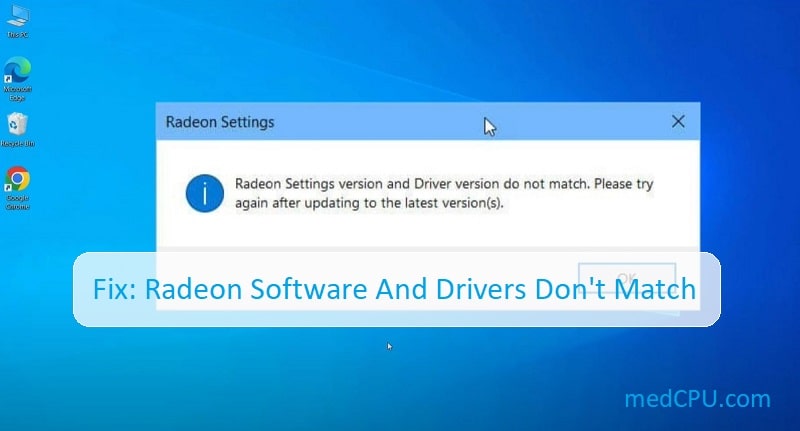Are you scratching your head over the differences between laptop GPUs and desktop GPUs? Well, you’re not alone. The fundamental differences between these two components are often overlooked yet can drastically affect gaming and software performance.
This easy-to-understand guide will demystify the complex world of graphics processing units, highlighting key distinctions in power, performance, and size that could influence your next tech purchase.
Ready to become a GPU guru? Let’s dive in!
Comparison Table – Laptop Gpu vs Desktop Gpu
| NVIDIA GeForce RTX 3060 | NVIDIA GeForce RTX 3060 Laptop GPU | NVIDIA GeForce RTX 3060 Ti | NVIDIA GeForce RTX 3070 Laptop GPU | NVIDIA GeForce RTX 3070 | NVIDIA GeForce RTX 3080 Laptop GPU | NVIDIA GeForce RTX 3080 | |
| CUDA Cores | 3584 | 3840 | 4864 | 5120 | 5888 | 6144 | 8704 |
| RT Cores | 28 | 30 | 38 | 40 | 46 | 48 | 68 |
| Tensor Cores | 112 | 120 | 152 | 160 | 184 | 192 | 272 |
| Clocks (GHz) | 1.78 | 1.28~1.70 | 1.67 | 1.29~1.62 | 1.73 | 1.25~1.71 | 1.71 |
| Memory | 12GB GDDR6 | 6GB GDDR6 | 8GB GDDR6 | 8GB GDDR6 | 8GB GDDR6 | 8GB / 16GB GDDR6 | 10GB GDDR6X |
| Memory bus width | 192-bit | 192-bit | 256-bit | 256-bit | 256-bit | 256-bit | 320-bit |
| TGP rating | 170W | 60~115W | 200W | 80~125W | 220W | 80~150W | 320W |
| NVLink | No | N/A | N/A | N/A | No | N/A | No |
Key Takeaways
- Desktop GPUs prioritize raw performance and visually demanding tasks like gaming or 3D modeling, while laptop GPUs are designed for energy efficiency and portability.
- Laptop GPUs consume less power and generate less heat compared to desktop GPUs, resulting in better battery life for laptops.
- Desktop GPUs have larger sizes and better cooling solutions, allowing for higher clock speeds and sustained performance compared to laptop GPUs with size and cooling constraints.
- Upgrading and customizing laptop GPUs is more challenging due to their limitations, whereas desktop GPUs offer more flexibility in terms of component selection and system customization.
Understanding the Difference between Laptop and Desktop GPUs
Desktop GPUs function differently from laptop GPUs due to their power requirements and form factors. Laptop GPUs are typically smaller, more compact units designed for energy efficiency and portability, while desktop GPUs offer greater performance capabilities but require more power and space to operate effectively.
How Desktop GPUs Work
A desktop GPU, short for Graphics Processing Unit, serves as the powerhouse of image rendering in a computer system. These robust pieces of technology, often larger than their laptop counterparts, operate with considerable speed due to having higher clock speeds.
Unlike laptop GPUs that focus on power efficiency, desktop GPUs prioritize raw performance and visually demanding tasks like gaming or 3D modeling. They work by using CUDA cores and VRAM to process graphical data swiftly and convey high-definition images onto your monitor.
A prime example is NVIDIA’s Ampere range of desktop GPUs renowned for their rapid performance. However, it’s important to consider the size difference between desktop and laptop GPUs; while boasting better performance overall, desktop versions require more space within a system case due to their larger builds.

How Laptop GPUs Work
Laptop GPUs, or Graphics Processing Units, serve as the beating heart of visual output in laptops. With their compact size and power efficiency, they are specifically designed to function within the tight confines of a laptop chassis.
As compared to desktop counterparts, these units work under certain constraints that come with compactness and mobility.
One unique aspect is their adept ability to balance power consumption. Laptop GPUs consume lesser power than desktop versions which directly impacts heat generation and battery life. They’re engineered for effective heat dissipation even when under heavy load.
Operating at roughly 70-80% speed of a desktop GPU, they bring considerable graphical capabilities despite being encapsulated within smaller spaces. However, the trade-off comes in terms of upgradeability and customization options – areas where laptop GPUs might fall short due to building limitations.
Key Differences between Laptop and Desktop GPUs
Diving into the world of graphics processing units (GPUs), there are key differences to note between laptop and desktop regimes. Desktop GPUs showcase larger sizes, requiring more room in a computer than their portable counterparts, precisely due to factors like superior thermal headroom and cooling solutions.
These actively cooled elements allow desktop GPUs to operate at higher clock frequencies without overheating, leading to enhanced performance. On the other hand, laptop GPUs prioritize power efficiency as they often run on battery power.
In doing so, these mobile GPUs need to manage heat generation meticulously by running at lower clock speeds, thus affecting performance levels. Moreover, some variants see a dip in VRAM capacity relative to desktop equivalents due mainly to form factor and thermal limitations inherent within laptops’ confined chassis design.
While cost-effectiveness can be an upside for laptop users with entry-level gaming needs, it’s worth noting that potential upgrades or connectivity options could be limited unlike with desktop set-ups where customization is prevalent.
Despite these dichotomies though both function towards rendering graphics data effectively but through different methodologies tuned for their respective environments.
Performance Comparison: Laptop GPU vs Desktop GPU
Laptop GPUs and desktop GPUs will now be compared in terms of performance using benchmarks and performance tests.
Benchmarks and Performance Tests
Performance testing is crucial when comparing laptop GPUs and desktop GPUs. Benchmarks provide objective measurements to evaluate their capabilities. In terms of performance, the laptop GPU can deliver a satisfactory 65 FPS at 1440p resolution, while the desktop GPU offers similar performance at a higher level.
It’s important to note that laptop and desktop systems are typically not subjected to the same exact benchmark tests or compared directly in one chart. However, according to benchmark scores, the GeForce RTX 3080 laptop GPU shows promise by competing with the GeForce RTX 2080 desktop GPU.
This comparison helps users understand how these GPUs perform under different circumstances and aids in making an informed decision when choosing between a laptop or desktop setup for their specific needs and preferences.
>>> Read more: RTX 2070 vs 2080
Factors Affecting Performance Differences
The performance difference between laptop and desktop GPUs can be attributed to several key factors. One of the main factors is power consumption, as laptop GPUs are designed to operate within the limited power capacity of a portable device, while desktop GPUs have access to more robust power sources.
This difference in power availability affects processing capabilities and overall graphics performance.
Another factor is thermal limitations. Laptops have smaller form factors with limited space for cooling systems, which can restrict the GPU’s ability to dissipate heat effectively. On the other hand, desktops often have larger cases with better cooling solutions, allowing for higher clock speeds and sustained performance.
Size constraints also play a role; laptops need to fit all components into a compact design, which may limit their potential for high-end GPU options compared to larger desktop cards. Additionally, laptops often prioritize power management and battery life over raw graphical horsepower.
Power Efficiency: Laptop GPU vs Desktop GPU
Laptop GPUs are designed to be power efficient, consuming less energy and generating less heat compared to their desktop counterparts.
Power Consumption and Heat Generation
Power consumption and heat generation are crucial considerations when comparing laptop and desktop GPUs. Laptop GPUs are designed to be more power-efficient than their desktop counterparts, resulting in lower power consumption.
This is especially important for laptops, as it directly impacts battery life. On the other hand, desktop GPUs generally consume more power due to their higher performance capabilities. They have greater freedom in terms of power usage since they are not restricted by battery limitations like laptops.
Additionally, the increased power consumption of desktop GPUs also leads to higher heat generation, requiring efficient cooling systems to prevent overheating. Understanding the power efficiency differences between laptop and desktop GPUs is essential for making an informed decision regarding performance requirements and energy usage optimization.
Impact on Battery Life (for Laptops)
Laptop GPUs have a significant impact on battery life due to their power consumption and energy efficiency. Compared to desktop GPUs, laptop GPUs are designed to be more power-efficient, consuming significantly less electricity.
In fact, laptops require only a fraction of the energy consumed by desktop computers, resulting in improved battery life. However, it’s important to note that while discrete graphics cards in laptops offer higher performance for graphics-intensive tasks, they can also drain the battery faster.
On the other hand, integrated graphics cards consume less power and contribute to better battery life compared to dedicated ones. When choosing between a laptop and a desktop, it’s essential to consider how GPU usage will affect power consumption and overall battery life.

Limitations of Laptop GPUs
Laptop GPUs have limitations due to their size and cooling constraints, making them less suitable for heavy gaming or graphics-intensive tasks.
Size and Cooling Constraints
Laptop GPUs face size and cooling constraints that can affect their overall performance. Due to the limited space within a laptop chassis, manufacturers must design GPUs that are smaller and more compact compared to desktop GPUs.
This restricted form factor limits the power and heat dissipation capabilities of laptop GPUs, which can result in lower clock speeds and potential thermal constraints. Additionally, while desktop cases provide more thermal headroom for better cooling, laptops have to rely on smaller cooling solutions like fans or heat sinks.
These limitations impact the performance of laptop GPUs compared to their larger desktop counterparts.
Upgradeability and Customization
Upgrading and customizing laptop GPUs present significant challenges due to their inherent limitations. Unlike desktop GPUs, which can be easily swapped out or upgraded, most laptop GPUs are soldered to the motherboard, making them nearly impossible to replace.
This lack of upgradeability restricts users from enhancing their laptop’s graphics performance by installing newer or more powerful GPUs. Additionally, customization options for laptops are limited compared to desktops, where users have greater freedom in selecting components and building a system tailored to their specific needs.
While there are exceptions and workarounds for upgrading certain laptop models or using external graphics cards, these options may not be feasible or cost-effective for all users. Therefore, when choosing between a gaming laptop and a desktop PC, it is essential to consider the trade-offs between portability and upgrade/customization potential based on individual requirements.
Advantages of Laptop GPUs
Laptop GPUs offer the advantage of portability and mobility, allowing gamers and professionals to enjoy high-quality graphics on the go.
Portability and Mobility
Laptop GPUs offer the advantage of portability and mobility, making them a great choice for users who are always on the go. With a laptop GPU, you can have powerful graphics processing capabilities in a compact and lightweight device, allowing you to work or play games wherever you are.
Whether you’re a student needing to bring your gaming rig to dorm rooms or a professional requiring high-performance graphics on business trips, laptop GPUs provide the convenience and flexibility that desktop GPUs simply cannot match.
Additionally, laptop GPUs are optimized for power efficiency, ensuring longer battery life compared to their desktop counterparts. So if portability is important to you, choosing a laptop GPU is definitely the way to go.
Cost-effectiveness for Entry-level Gaming
Entry-level gaming laptops offer a cost-effective solution for gamers who are on a budget. These laptops come equipped with dedicated graphics cards, which provide better performance compared to integrated graphics found in most regular laptops.
While they may not match the raw power of high-end desktop GPUs, entry-level gaming laptops can still deliver smooth gameplay and decent graphics quality without breaking the bank. With advancements in technology, manufacturers have managed to optimize laptop GPUs to provide a satisfactory gaming experience at an affordable price point.
So if you’re looking to get into gaming without spending a fortune, an entry-level gaming laptop is definitely worth considering.
Choosing the Right GPU: Laptop or Desktop?
When deciding between a laptop or desktop GPU, consider your gaming performance needs and the level of mobility required.
Considerations for Gaming Performance and Mobility Needs
When choosing between a laptop GPU and a desktop GPU, it is important to consider your gaming performance and mobility needs. Gaming performance heavily relies on the capabilities of the graphics card, so you’ll want to ensure that the GPU you choose can handle the games you want to play smoothly.
Additionally, if you require a portable setup for gaming on the go, a laptop with a powerful GPU might be the better choice. However, keep in mind that high-performance laptops tend to be more expensive and may have limited battery life compared to laptops with integrated or lower-end GPUs.
So before making a decision, carefully evaluate your requirements for gaming performance and mobility in order to choose the right GPU for your specific needs.
Budget Considerations
One important factor to consider when choosing between a laptop GPU and a desktop GPU is your budget. Desktop GPUs can vary in cost depending on the desired performance level, while laptop GPUs are typically included in the overall cost of the laptop itself.
If you have a limited budget but still want decent gaming capabilities, a laptop GPU may be more cost-effective, especially for entry-level gaming. However, if you have a bigger budget and prioritize high-performance gaming or other demanding tasks like video editing, investing in a desktop GPU may offer more value for your money.
It’s essential to weigh the cost of the GPU against the performance benefits it will provide for your specific needs before making a decision.
Conclusion
In conclusion, when it comes to laptop GPUs vs desktop GPUs, there are several key differences and considerations to keep in mind. While desktop GPUs generally offer more power and customization options, laptop GPUs provide the benefit of portability and cost-effectiveness for entry-level gaming.
Ultimately, choosing the right GPU depends on your specific needs for gaming performance and mobility, as well as budget constraints. It’s important to weigh these factors carefully before making a decision.
FAQs
1. What is the difference between a laptop GPU and a desktop GPU?
The main difference between a laptop GPU and a desktop GPU is its size and power consumption. Laptop GPUs are smaller in size to fit into portable devices and have lower power requirements compared to their desktop counterparts.
2. Can I upgrade the GPU on my laptop?
In most cases, it is not possible to upgrade the GPU in a laptop as they are typically soldered onto the motherboard. However, some high-end gaming laptops may offer limited upgradability options.
3. Which one performs better, a laptop GPU or a desktop GPU?
Generally, desktop GPUs tend to perform better than laptop GPUs due to superior cooling capabilities and higher power limits. Desktop GPUs also have larger VRAM capacities and more powerful processing cores.
4. Are there any advantages of using a laptop GPU over a desktop GPU?
One advantage of using a laptop GPU is portability. Laptops allow you to take your gaming or graphic-intensive work on the go without sacrificing too much performance. Additionally, some high-end laptops with powerful GPUs can provide comparable performance to mid-range desktop systems for certain tasks or games.
Related Posts:

Eyal Ephrat serves as the co-founder and CEO of medCPU.com, where technology is making significant strides in the field of medicine. Through his experience in purchasing PC and laptop equipment and various other tech products, Eyal Ephrat contributes valuable insights to medCPU’s mission.





